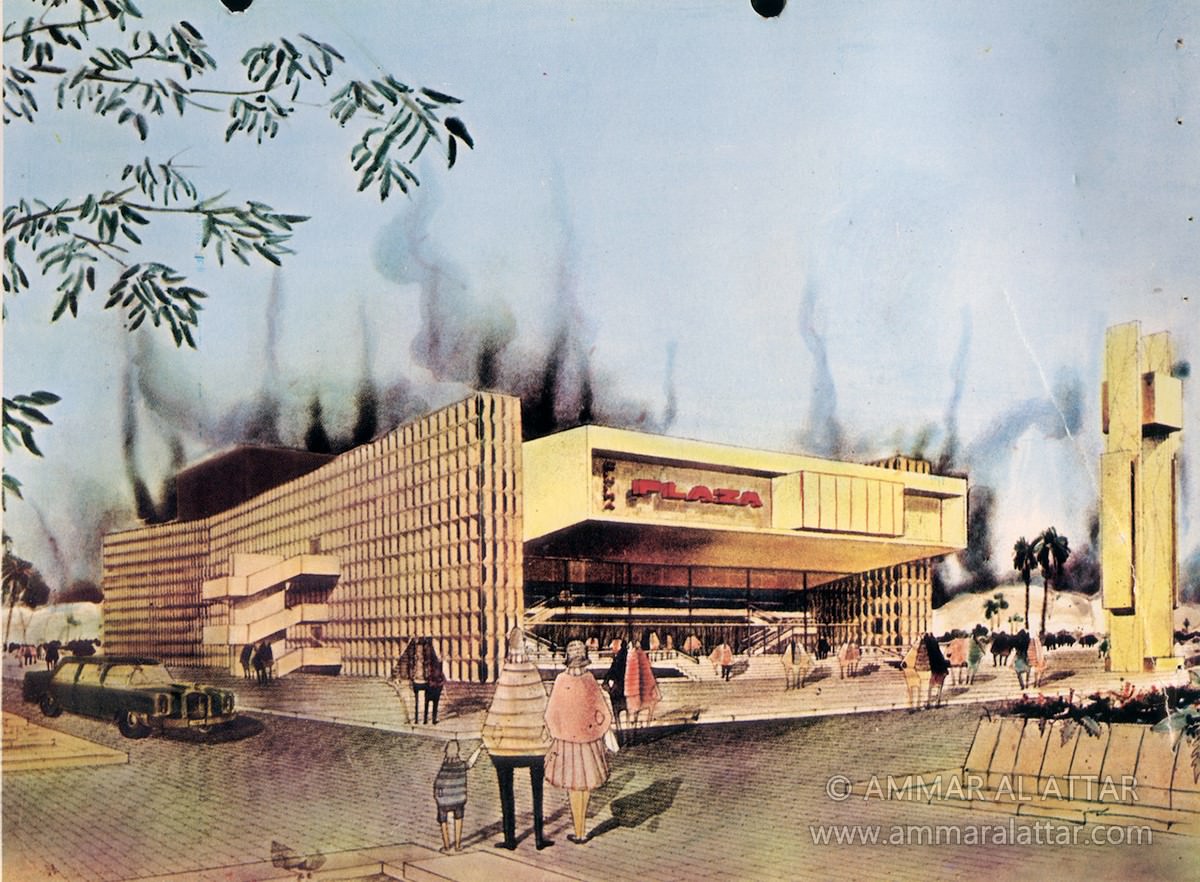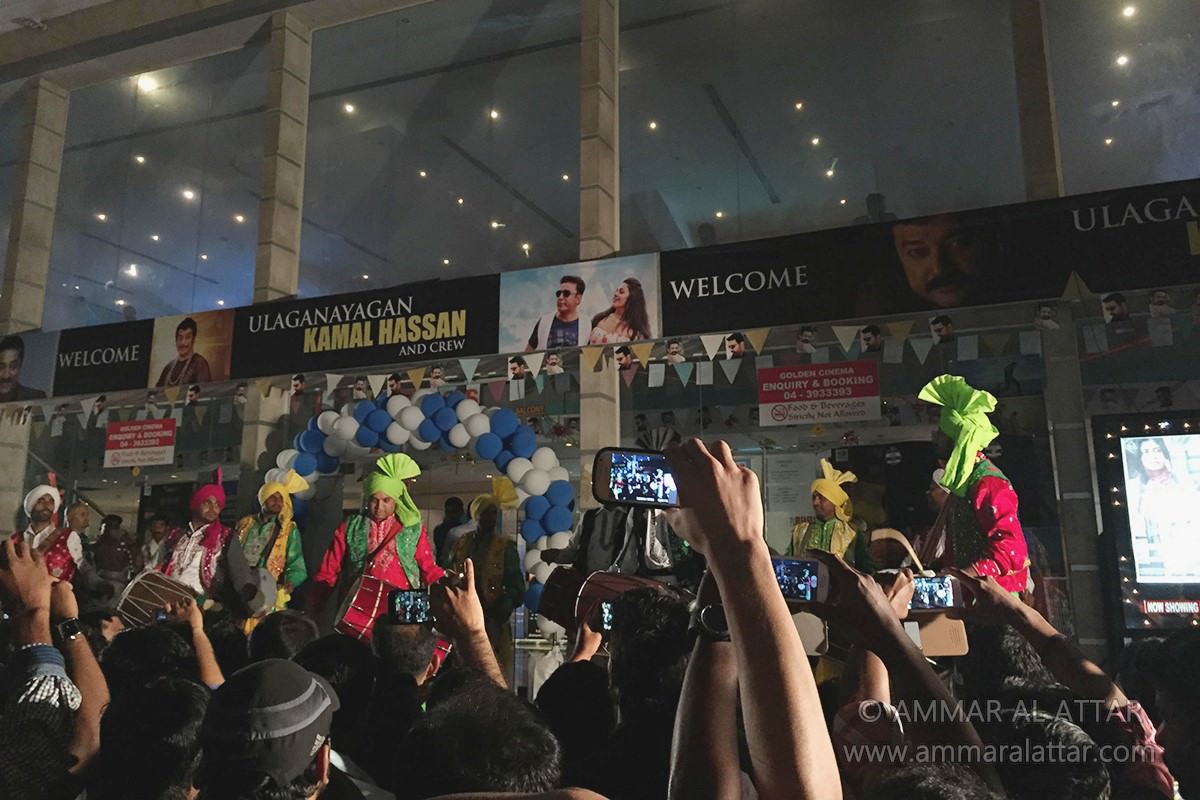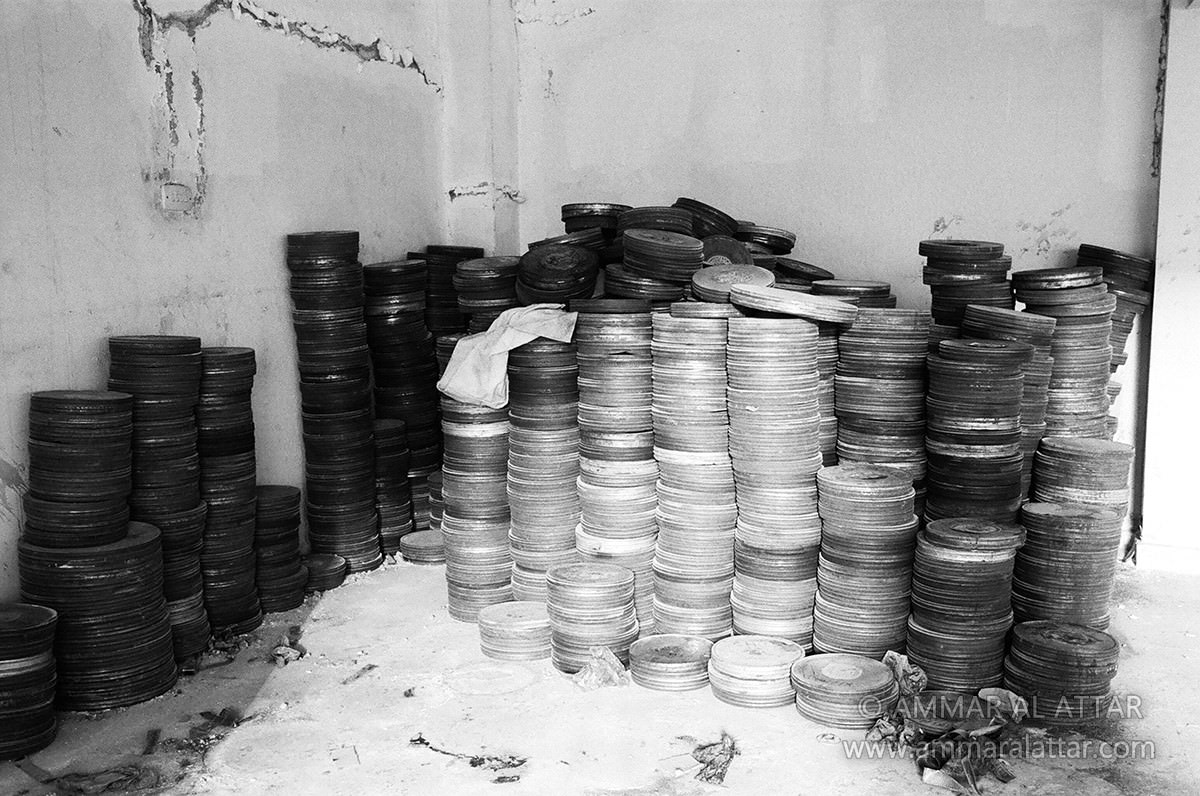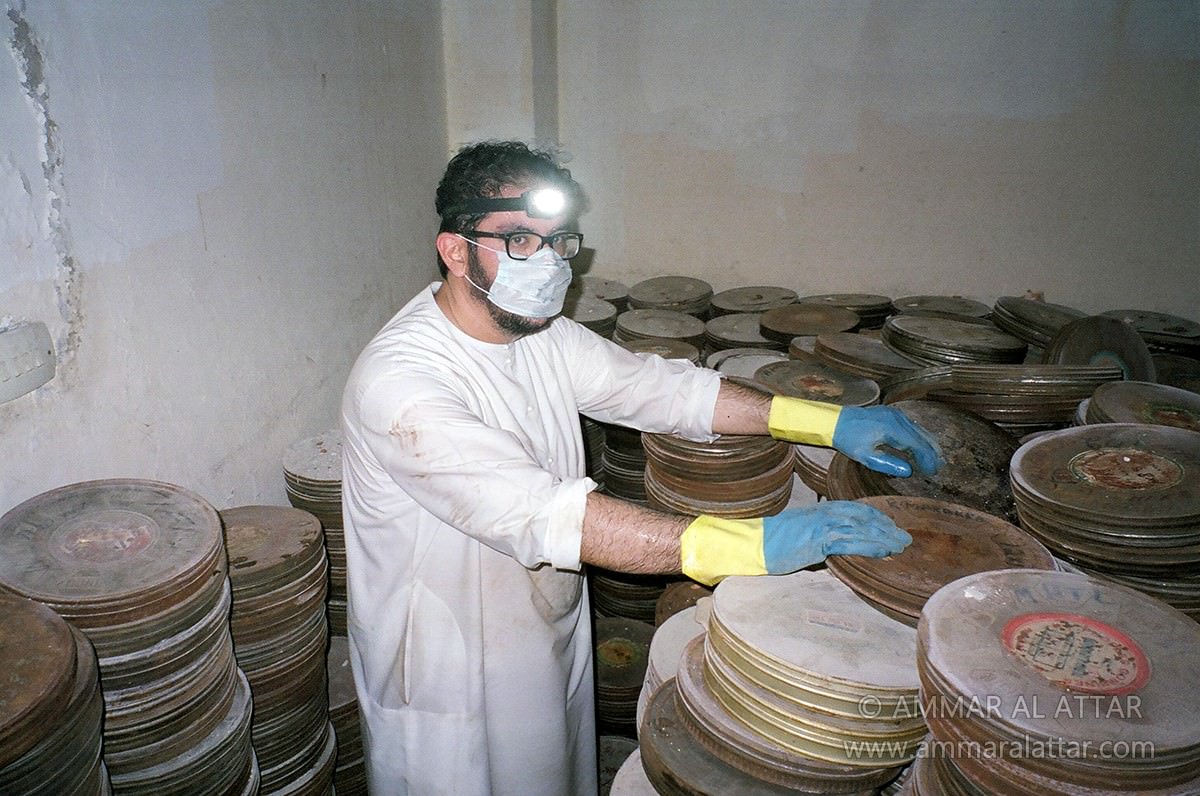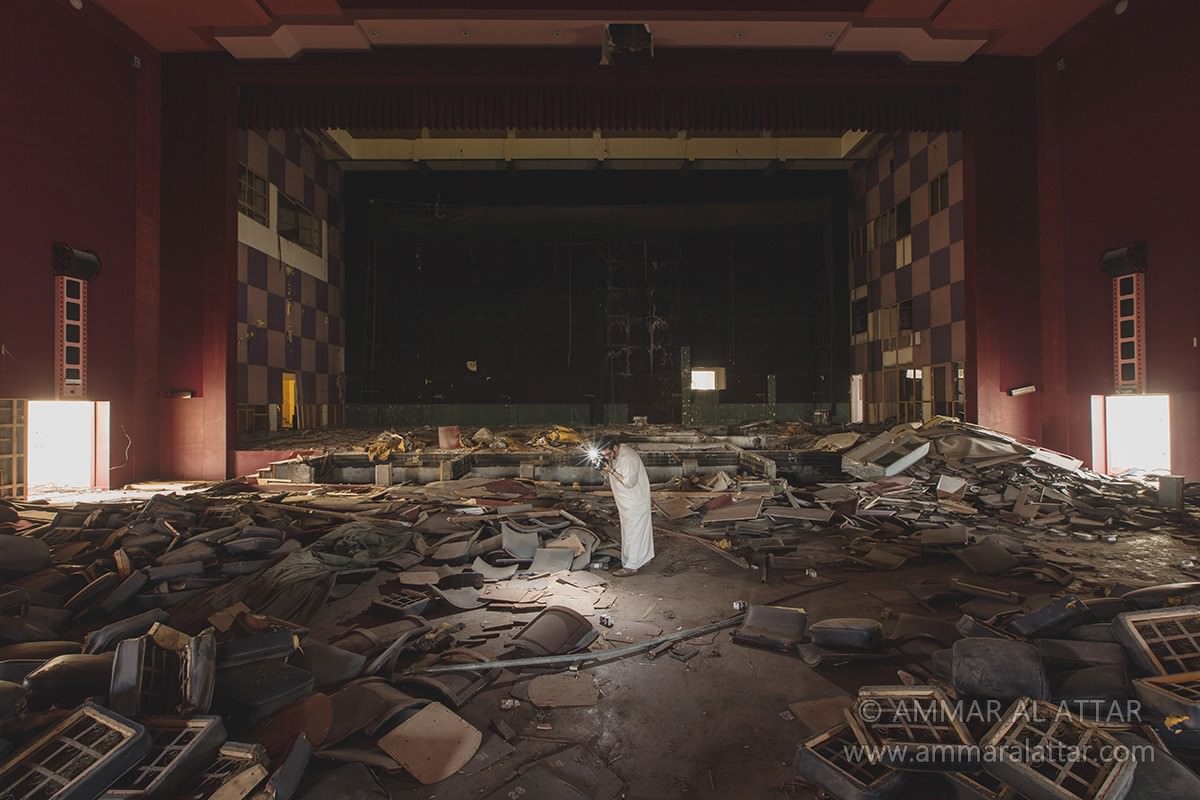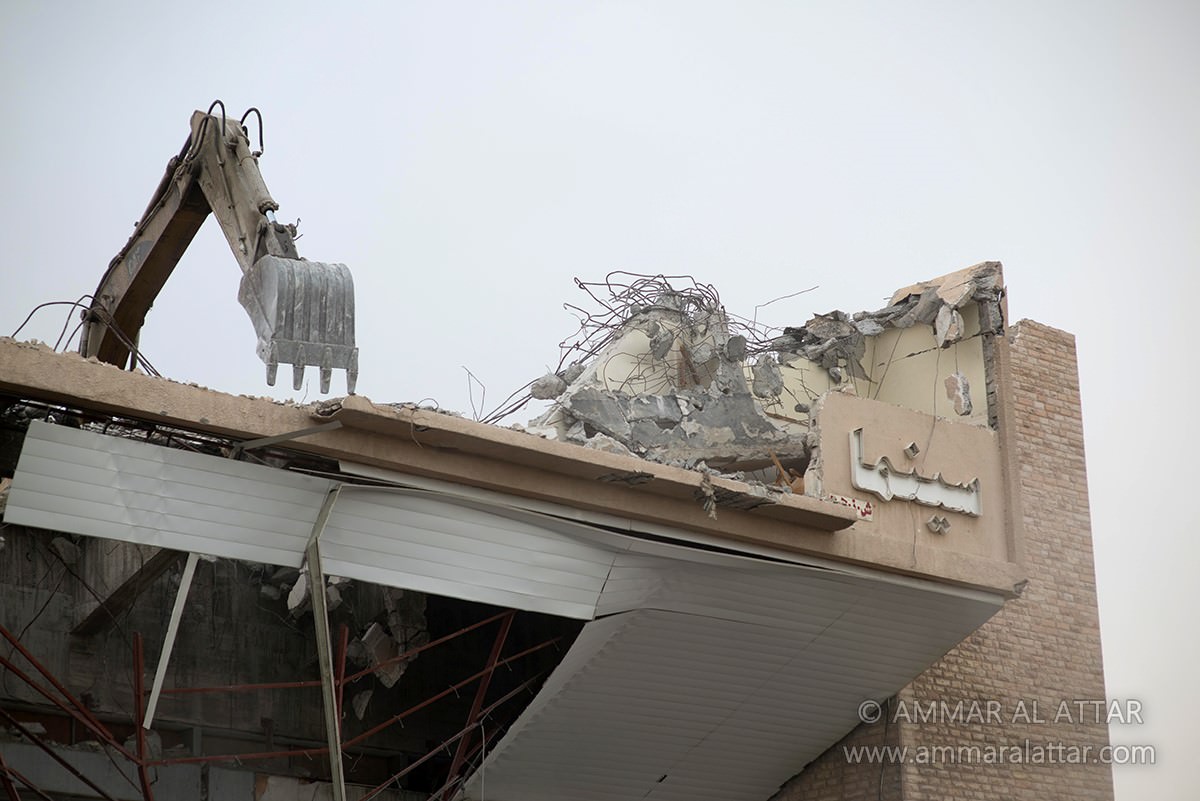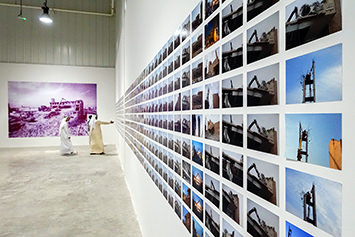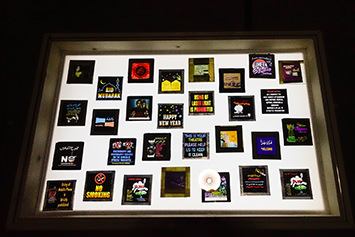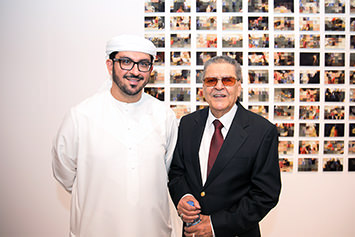Ammar Al Attar | Plaza Cinema
Ammar Al Attar's Plaza Cinema (2017) stems from the artist's ongoing efforts to rescue and record the contents of decommissioned movie-houses in the UAE. Since April 2015, the artist has concentrated on Plaza Cinema, one of the first and most popular theatres in the country. Opened in 1972 in Bur Dubai, the cinema is now in the midst of being demolished, clearing the way for future development. The photographs, objects and ephemera shown here are abstracted, reconstituted and framed in a display that tracks the artist’s personal engagement with an important part of Dubai’s cultural history.
Plaza Cinema opened within a year of the UAE’s founding, designed to service and entertain an expanding community of expatriate workers. At the time, it was hailed as the most modern and opulent movie-house in the Gulf. In addition to air conditioning that assured year-round viewing, with 1500 seats it had the largest capacity of any cinema in the region; audiences came in droves. Other movie-houses like Al Nasr, Deira and Strand, were equally popular. Plaza Cinema prospered in its location, surrounded by a bus station, abra station and taxi stand, enabling access for people from different parts of the city. It became a landmark in an ever-changing urban environment, and was one of the few places to go outside one’s home on evenings or weekends. Adding to the allure of a night at the movies was the fact that televisions were still a rarity for many people.
Plaza Cinema periodically screened Arabic and American films, but primarily programmed Indian cinema, showing small independent movies alongside Hindi, Tamil and Malayalam blockbusters. Movie posters, which were posted in wooden boxes on the street and on abras carrying commuters across Dubai Creek, included text in Hindi, Arabic and English, indicative of the cinema’s diverse audience. In the mid-2000s, with increasing competition from more technically advanced multiplexes, Plaza Cinema changed owners and was renamed Golden Cinema. When it officially closed on 2 May 2015, the last event was the world premier of Uttama Villain, a Tamil comedy-drama, with Kamal Hassan, the film’s leading actor and one of Indian cinema’s biggest celebrities, in attendance.
Starting from the final screening two years ago, till its demolition late last year, Al Attar visited the site dozens of times, gaining the trust of people who worked there and whose job it now was to shut the place down. He systematically photographed and collected artifacts that sparked his interest, from old paper tickets and communiqués with distributors, to old film reels and hand-painted glass slides that were used to promote nearby businesses and set the house rules before screenings. In this exhibition, Al Attar presents a selection of what he found, alongside images that he took, reworked and reframed to narrate his encounter.
Al Attar’s documentation and representation of the movie-house is far from objective. It is, in fact, a process of adaptation, wherein source materials are edited, cropped, scanned, digitized and abstracted. As an exhibition, Plaza Cinema follows a narrative shaped by the artist’s own interests in the mechanics of image making and circulation. It is part of the same cultural milieu as Al Attar’s other archival project, Reverse Moments, a compendium of images and interviews with the people who operate some of the oldest photography studios in the UAE, providing photographic services for the country’s expanding labor force.
Al Attar approaches the past as a translator, rather than as a scholar or historian. He is driven to reconsider the rapid development of the country and preserve elements that fall outside official narratives. By testing different display systems, documentation itself becomes a subject of the artist’s work, as he shifts from mere recording, to the re-articulation and abstraction of past and current events. In this light, Plaza Cinema is, beyond all else, an attempt to comprehend the archive as a specific creative act.
